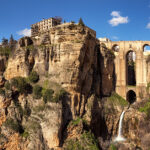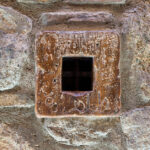Andalucía, the southernmost autonomous community in Peninsular Spain, encompasses our home province of Málaga, along with the provinces of Almería, Cádiz, Córdoba, Granada, Huelva, Jaén, and Sevilla.
Within this heritage-rich region lies historical villages, towns and cities which serve as cultural havens abundant with ancient architecture and tales of old. Wherever you are within Andalucía, you are never far from cobbled streets, antiquated arches, corniced façades, and handcrafted doorways, each offering a glimpse into the times of bygone civilizations.
Article by Sophie Gatward-Wicks
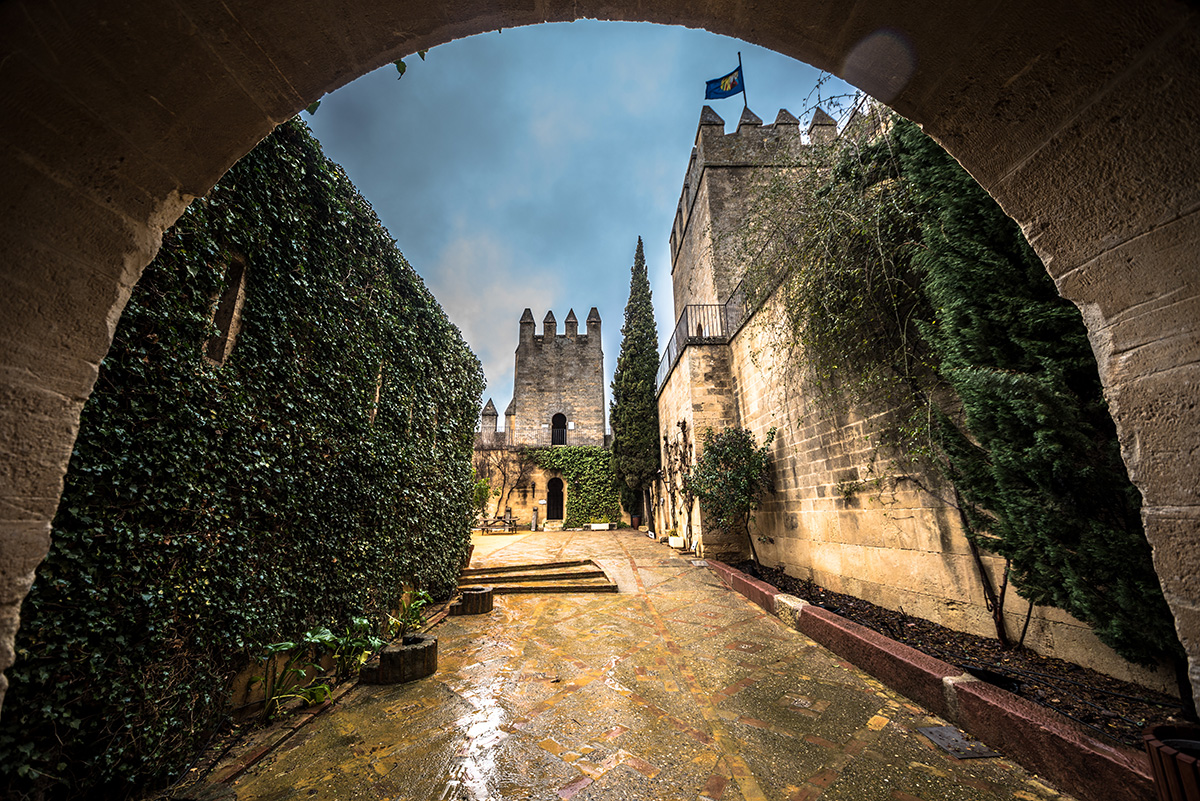
National Geographic, one of the largest nonprofit scientific and educational institutions in the world, has taken a great interest in Andalucía over the last few decades. The publication has featured the region many times due to its historical significance in Western Europe, it’s travelers appeal through white washed villages and sierras, its impressive nature reserves and monuments, its geographical location with being the southernmost point in Europe, as well as delving into the agriculture, gastronomy and traditions that make Andalucía the fascinating and magnificent place it is today not just to visit, but to live and work in.
The Sur in English newspaper reports: “National Geographic has selected the most interesting villages and towns in Spain for their Middle Ages heritage, a list of 40 municipalities that includes four towns in Andalucía. A perfect option for rural tourism before or just after the summer heat.”
1-Almodóvar del Río in Córdoba
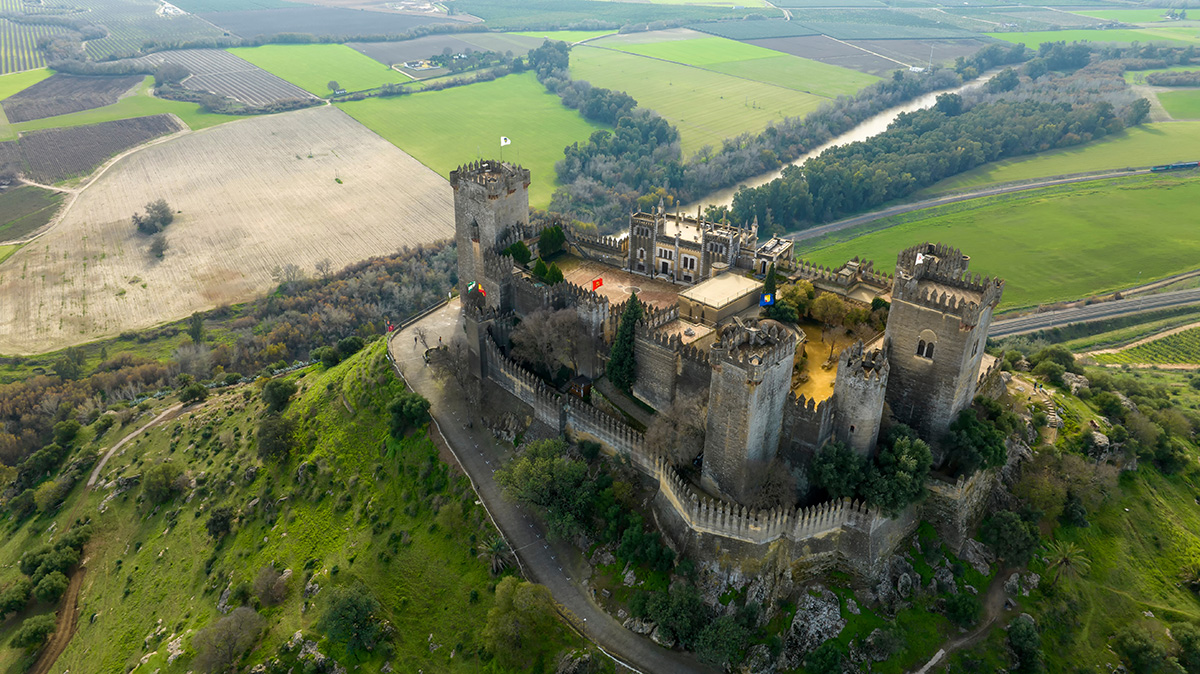
Perched beside Parque Natural Hornachuelos, Almodóvar del Río is a vibrant hub of culture and heritage famous for its historic Castillo de Almodóvar. This Moorish-built fortress dating back to the 7th century, was featured on the TV series Game of Thrones.
The town traces its roots back to the Paleolithic era, when its favourable geographical location made it an attractive settlement site. Over the centuries, various civilisations including the Neolithic, Iberian, Roman, Visigothic, and Arab, have traversed this region, each leaving their distinct cultural imprints behind.
Top historical attractions in the town:
1. Almodóvar del Río Castle (Castillo de Almodóvar del Río)
2. Iglesia Parroquial de la Asunción (Parish Church of the Assumption): Located in the heart of the town, this church is a fine example of Mudejar architecture with elements dating back to the 14th century. It features a beautiful bell tower and ornate interior decorations.
3. Plaza de la Constitución (Constitution Square): This charming square is the main gathering point in Almodóvar del Río, surrounded by historic buildings and bustling cafés. It’s a great place to soak in the atmosphere of the town and admire its traditional architecture.
4. Ermita de la Virgen del Valle: Located on the outskirts of Almodóvar del Río, this viewpoint named after the town’s patron saint is a peaceful spot surrounded by olive groves.
5. Baños Árabes (Arab Baths): Ancient baths offering a glimpse into the town’s Islamic heritage.
2-Castellar de la Frontera in Cádiz
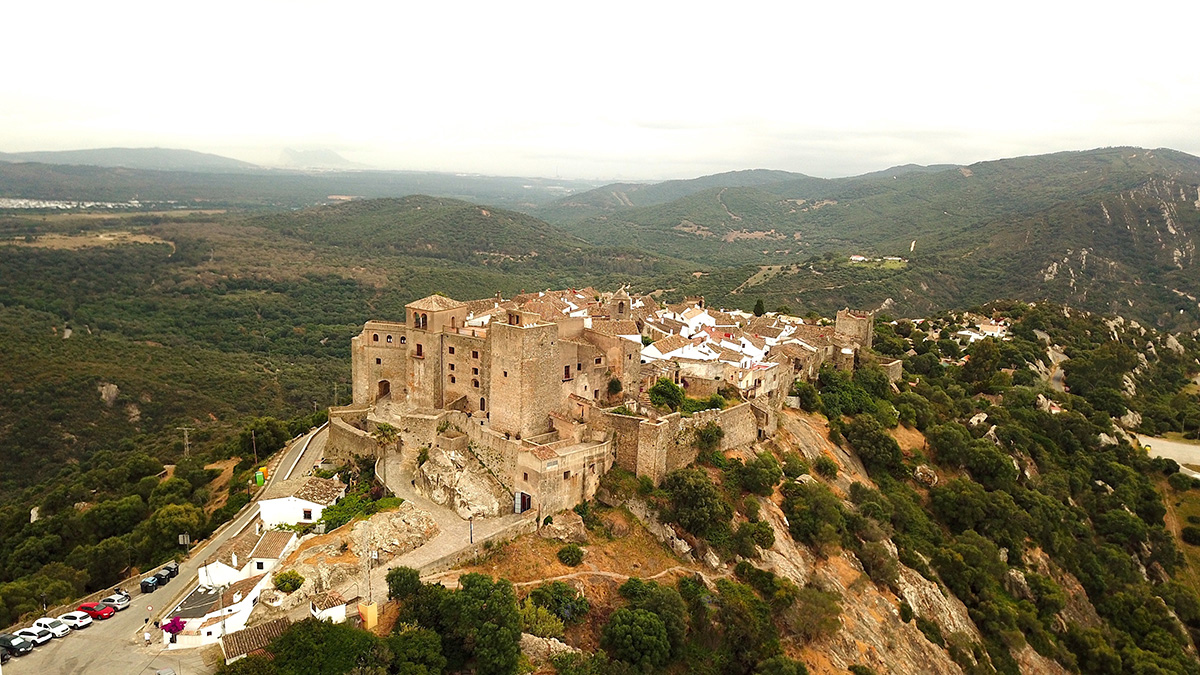
High atop a hill, the ancient village of Castellar de la Frontera offers sweeping vistas of the Guadarranque reservoir. This historic fortress settlement is also renowned for its castle, as its name ‘Castellar‘ denotes its castle-centric significance. With origins dating back to prehistoric and Bronze Age times, Castellar evolved into a medieval stronghold.
Evidence of its prehistoric past persists in the numerous caves dotting the landscape, showcasing captivating cave drawings. Throughout history, Castellar played a pivotal role in the conflicts between the Spanish and Muslims, coveted for its strategic hilltop positioning, attracting interest from diverse cultures, each vying for control over this formidable bastion. You can drive to this historic village from Marbella in just under an hour.
Top historical attractions in the town:
1. Castellar de la Frontera Castle (Castillo de Castellar).
2. Old Town: The picturesque old town is a labyrinth of narrow streets, whitewashed houses, and historic buildings. Soak in the atmosphere and admire its traditional Andalusian architecture.
3. Arab Walls: Remnants of ancient Arab walls still encircle parts of the old town, offering a glimpse into the town’s past. These walls are a testament to Castellar’s strategic importance as a defensive stronghold.
4. Iglesia de San Sebastián (Church of San Sebastián): Located in the heart of the old town, the church dates back to the 17th century. It features a Baroque façade and interior decorations, including ornate altarpieces and religious artwork.
5. Baños Árabes (Arab Baths): These well preserved ruins date back to the Moorish period.
3-Niebla in Huelva

“Niebla” means “fog” in Spanish, perhaps hinting at its close proximity to the Atlantic coast. This town beckons exploration, with an impressive history dating back roughly 3000 years. Evidence from archaeological discoveries indicates agricultural practices were prevalent towards the end of the Bronze Age. By the 8th century B.C.,the allure of silver mining in the hinterland captivated Phoenician traders.
Situated between the mines and the ocean port, Niebla’s residents actively participated in the silver industry, leading to their prosperity. Artifacts from this period reveal the ownership of jewelry, luxury items, and high-quality weaponry by Niebla’s residents. Furthermore, the discovery of a tomb belonging to a prominent local leader underscores not only the town’s economic prosperity but also its political significance.
Top historical attractions in the town:
1. Castillo de Niebla (Niebla Castle): Dominating the town’s skyline, Niebla Castle is a monumental fortress with origins dating back to Roman times. Over the centuries, it was expanded and fortified by subsequent civilizations, including the Moors and Christians. Visitors can explore its impressive walls, towers, and interior spaces.
2. Murallas de Niebla (City Walls): Niebla is known for its remarkably well-preserved medieval city walls, which encircle much of the historic center. Dating back to the 12th century, these walls are punctuated by gates, towers, and defensive bastions.
3. Iglesia de Santa María de la Granada (Church of Santa María de la Granada): Located within the old town, this historical church is an architectural gem that dates back to the 14th century, featuring a stunning Mudejar-style façade, intricate Gothic and Renaissance elements, and a richly decorated interior with altarpieces and religious art.
4. Puente Romano (Roman Bridge): Spanning the Tinto River, the Roman Bridge of Niebla is a testament to the town’s ancient past. Believed to date back to the 1st century AD, this well-preserved bridge once formed part of the Via Augusta, an important Roman road that connected various cities in the Iberian Peninsula.
5. Museo Arqueológico de Niebla (Archaeological Museum of Niebla): Housed in a former convent, this museum showcases archaeological artefacts and exhibits that trace Niebla’s rich history from prehistoric times to the present day. Highlights include Roman pottery, Islamic ceramics, and medieval artefacts discovered in the region.
4-Montefrío in Granada
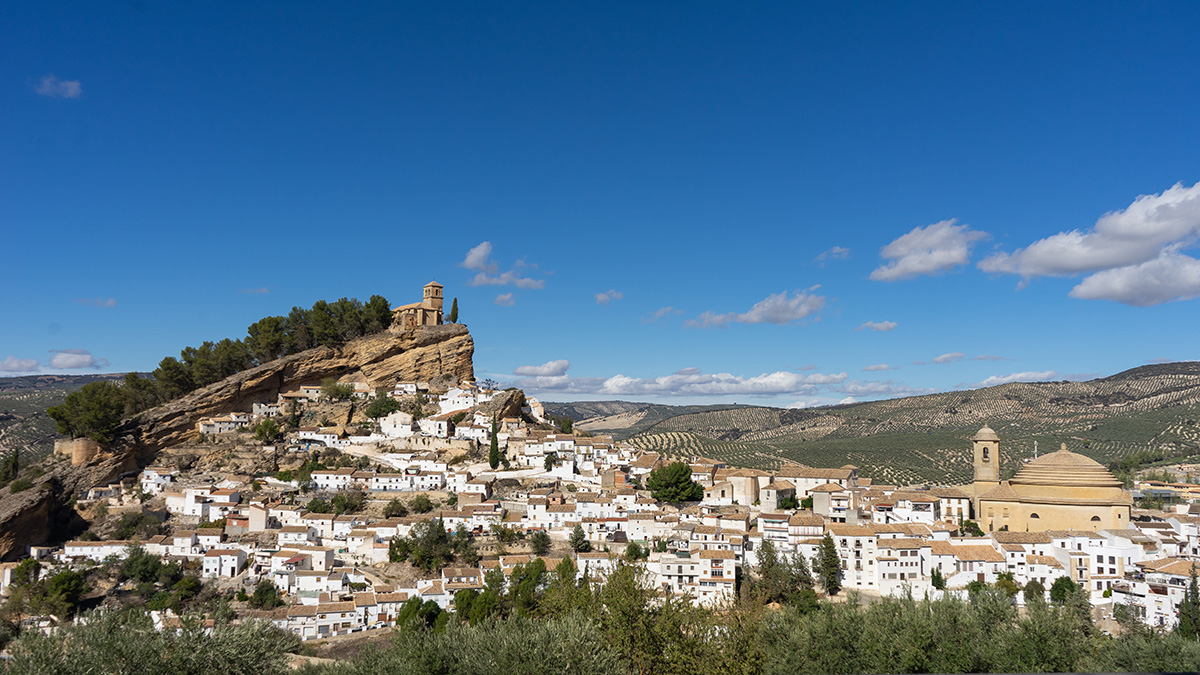
Nestled away from the typical tourist routes, in the northwestern reaches of Granada lies the welcoming village of Montefrío. Surrounded by rolling olive groves and cereal crops, this idyllic view is best captured from the renowned ‘National Geographic Viewpoint’, accessible via the A-335 road. Since recognised by the National Geographic magazine as “one of the best places in Spain,” the village has honoured the publication by renaming the viewpoint.
While there are approximately five official viewpoints scattered around the village, this particular spot offers the quintessential view of Montefrio’s beauty. At the summit of the Lion King-reminiscent rock stands the remnants of Montefrío Castle, dating back to the Moorish period. Its strategic location between the Sierra de Priego and Sierra Parapanda made it a formidable fortress guarding the region. Despite its ruins, the castle’s imposing presence and historical significance continue to captivate visitors, providing a tangible link to Montefrío’s rich past.
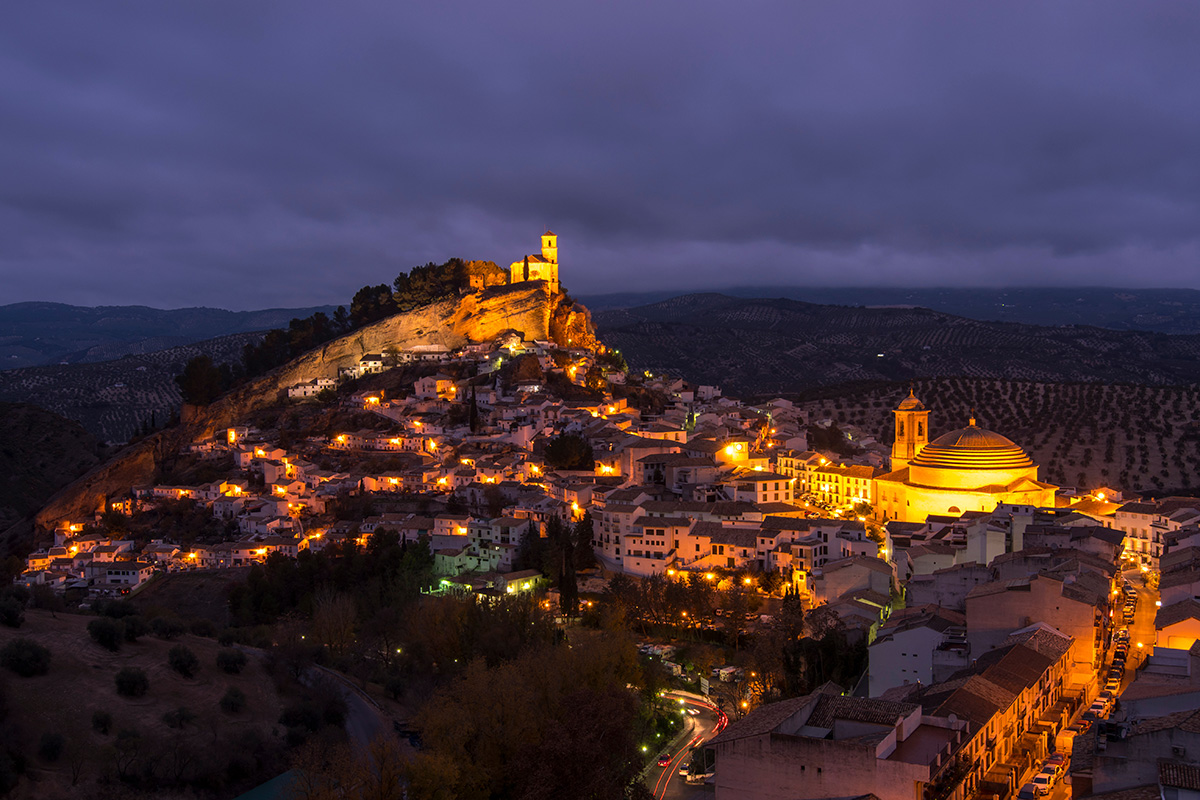
Top historical attractions in the town:
1. Montefrío Castle: With incredible views of the town and surrounding sierras, it served as a key frontier fortress in the 15th century, commanding the open valley between two mountain ranges.
2. Iglesia de la Encarnación (Church of the Incarnation): This Pantheon-style church is a prominent landmark in Montefrío, known for its distinctive architecture and historical significance. Dating back to the 16th century, it is a fine example of Andalusian Renaissance architecture.
3. Mirador de Montefrío (renamed the National Geographic Viewpoint): Located on the A-335 road, the famous viewpoint provides a breathtaking panoramic view of the village nestled amidst olive groves, with the castle and church prominently featured in the landscape.
4. Barrio de La Villa (Old Town): The Old Town of Montefrío is a charming area to explore, with its picturesque alleys and atmosphere borrowed from centuries past.
5. Cueva de las Ventanas (Cave of the Windows): While not located directly in Montefrío, the Cave of the Windows is a nearby archaeological site worth visiting. This cave features prehistoric cave paintings and offers guided tours that provide insight into the area’s ancient history.
Sources:
General information re: the provinces and historical towns mentioned: andalucia.com


